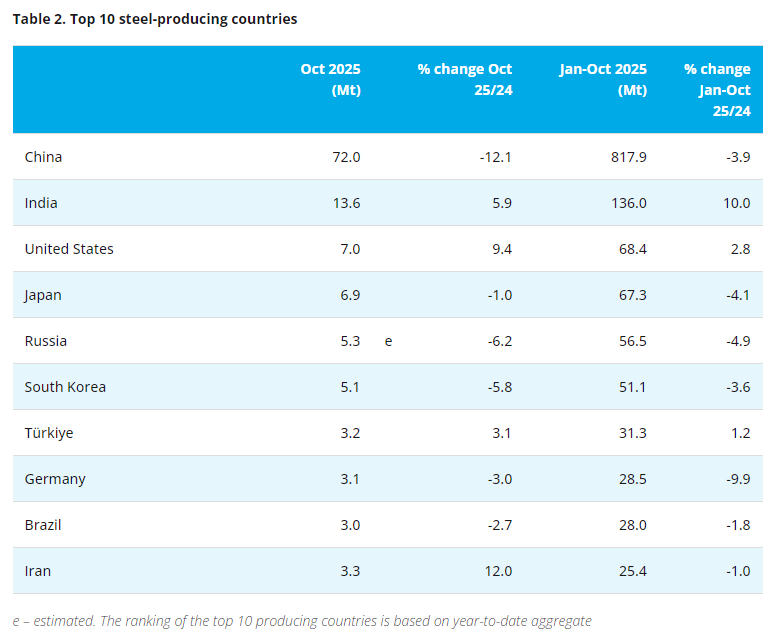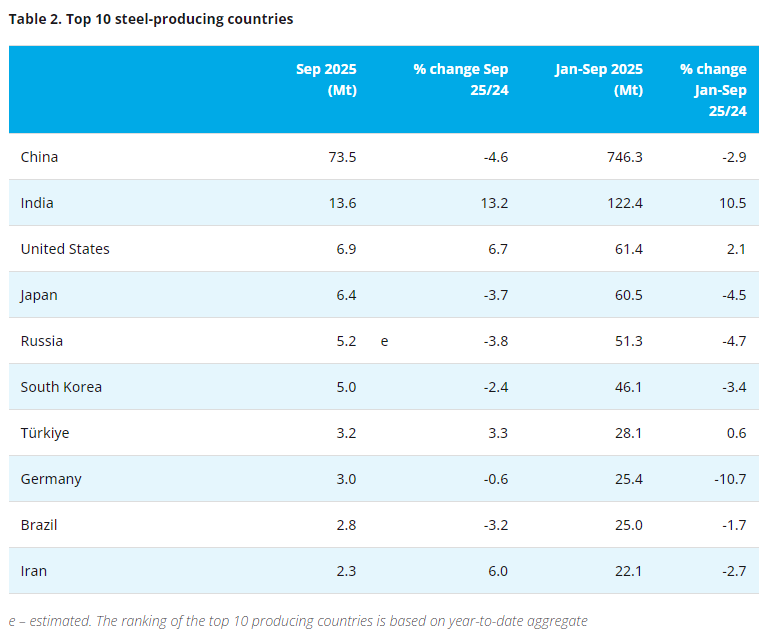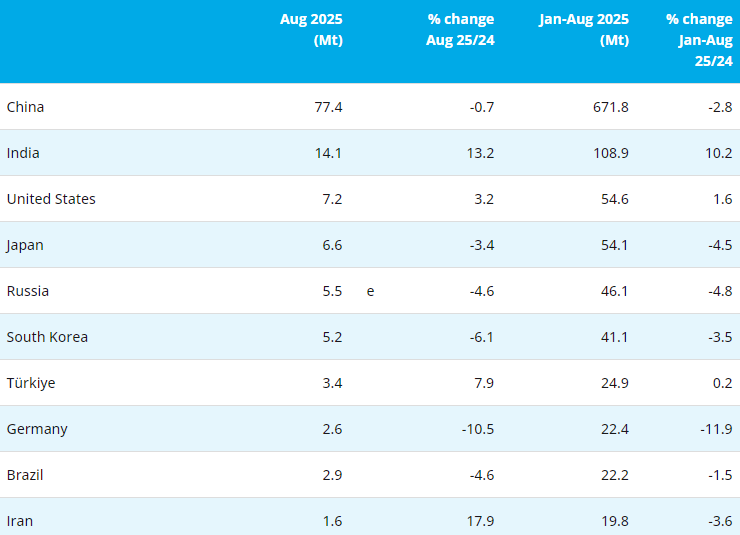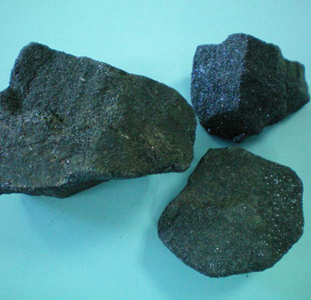[Ferro-Alloys.com] India’s Green Steel Demand Poised to Hit 179 Million Tons by FY50 Amid Decarbonization Push
EY-WWF-CII report highlights rapid growth in green steel adoption across automotive, infrastructure, and construction sectors, driven by carbon pricing, climate goals, and technological advancements
A new report by EY Parthenon, developed in collaboration with WWF-India and the CII-Green Business Centre, projects India’s green steel demand to rise exponentially to approximately 179 million tons by FY50. Backed by the India Green Steel Coalition (IGSC), the study highlights how the shift toward sustainability in key sectors—automotive, infrastructure, and construction—is propelling this demand surge.
The report, titled “Unlocking Green Steel Demand: An Assessment of India’s Automotive, Infrastructure and Construction Sectors”, aligns closely with India’s ambition to expand steel production capacity to 500 million tons annually by 2047, supporting both economic and climate goals.
Green steel, defined as having an emission intensity below 0.5 tons of CO? per ton of crude steel, currently sees negligible demand. However, projections indicate a rapid climb to 4.49 million tons by FY30. Construction is expected to lead the charge with 2.52 million tons, followed by infrastructure at 1.5 million tons and the automotive sector at 0.48 million tons. By FY40, green steel demand could touch 73.44 million tons—nearly tripling in a decade.
India’s current steel consumption stands at 136 million metric tons, with infrastructure and construction accounting for a combined 78% of finished steel use. By FY50, total steel demand is forecast to reach 390 million tons, driven by aggressive urbanization and development.
The study notes a structural shift in steel economics, catalyzed by rising carbon pricing. Traditional BF-BOF (blast furnace-basic oxygen furnace) steel production costs are expected to rise by 81% by 2050 due to carbon taxes, jumping from US$660 to US$1,193 per ton. Conversely, the green steel premium—initially responsible for increased production costs of 3.7% to 5.2% across various sectors—is anticipated to drop below 1% between 2035 and 2040 as green hydrogen and other technologies become more affordable.
India’s exporters face external pressures from the European Union’s Carbon Border Adjustment Mechanism (CBAM), which could levy hefty import tariffs on high-carbon steel. With India’s emission intensity at 2.5 tons of CO? per ton—almost double the EU benchmark of 1.28—CBAM-related taxes could amount to INR 19,277 crore by 2030 unless decarbonization is fast-tracked.
The report outlines a strategic roadmap for government, industry, and end-use sectors to scale up green steel adoption:
Policy Recommendations
- Introduce carbon pricing mechanisms targeting US$90–100 per ton by 2040
- Offer financial incentives and regulatory mandates for green steel technologies
- Align domestic policies with international climate standards
Industry Actions
- Reduce emission intensity from 2.5 to 1.21 tons of CO? per ton by 2030
- Scale up hydrogen-based DRI and other innovative production technologies
- Invest in R&D to lower green steel production costs by 30% by 2040
End-User Commitments
- Start green steel procurement well before net-zero target timelines
- Absorb short-term production cost increases to enable long-term environmental benefits
- Build supplier partnerships to ensure a consistent green steel supply chain
Technologies like hydrogen-based DRI and electric arc furnaces powered by renewables are central to India’s green steel transition. However, the report warns of looming supply-demand mismatches, calling for accelerated infrastructure development and strategic investments to close the gap.
As carbon regulation tightens and technology matures, green steel is shifting from a sustainability choice to a business necessity for India’s industrial ecosystem.
- [Editor:tianyawei]



 Save
Save Print
Print Daily News
Daily News Research
Research Magazine
Magazine Company Database
Company Database Customized Database
Customized Database Conferences
Conferences Advertisement
Advertisement Trade
Trade

















Tell Us What You Think